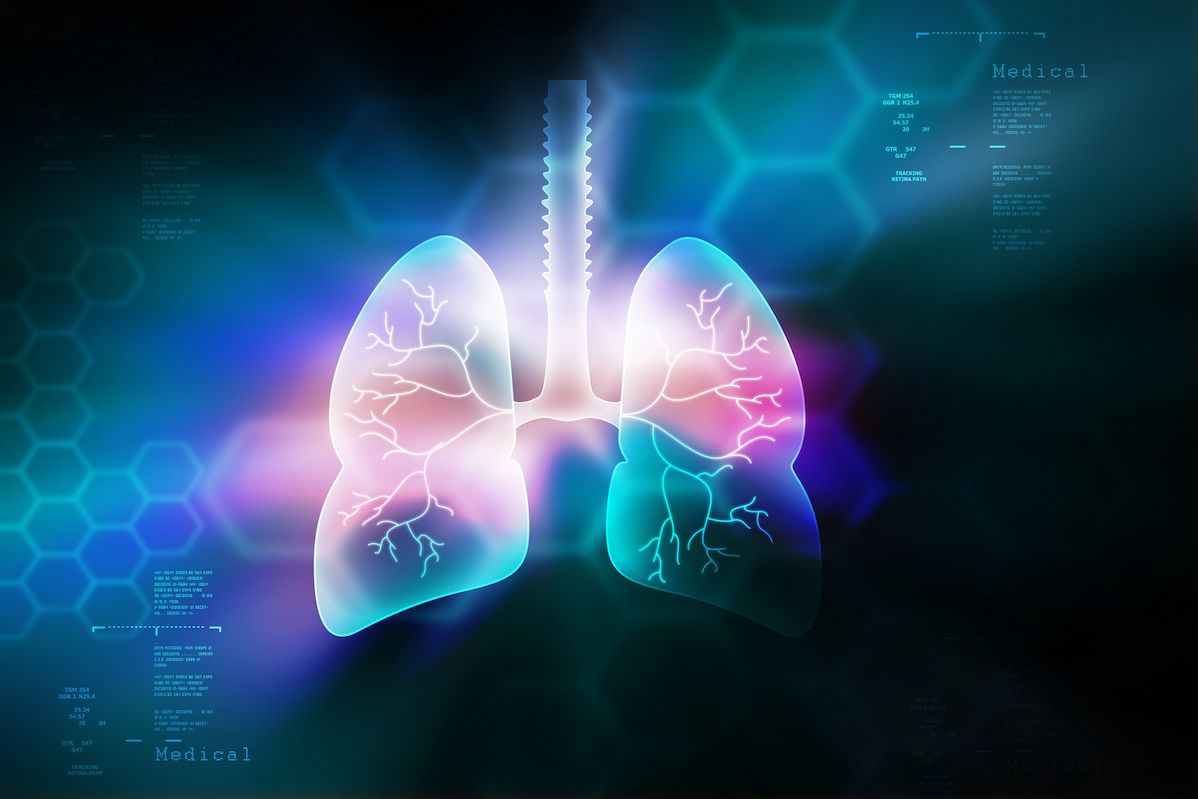Adjuvant Chemotherapy May Have Survival Benefit in Stage III Locally Advanced NSCLC
Favorable recurrence-free survival and overall survival outcomes were not observed in the overall patient cohort receiving adjuvant chemotherapy for advanced NSCLC.
Favorable recurrence-free survival and overall survival outcomes were not observed in the overall patient cohort receiving adjuvant chemotherapy for advanced NSCLC.

The use of adjuvant chemotherapy in patients with locally advanced non–small cell lung cancer (NSCLC) showed a survival benefit in certain patient subgroups who also received neoadjuvant chemotherapy, particularly in those with stage III disease, according to a subgroup analysis of a retrospective study published in In Vivo.
Results from the study show that in the overall cohort, patients who received adjuvant chemotherapy plus neoadjuvant chemotherapy did not show improved recurrence-free survival (RFS; HR, 1.01; 95% CI, 0.40-2.59; P = .98) or overall survival (OS; HR, 0.72; 95% CI, 0.25-2.08; P = 0.55) compared with those who only received neoadjuvant chemotherapy.
A benefit was observed for adjuvant chemotherapy in surgical-pathological stage III disease in RFS (HR, 0.22; 95% CI, 0.02-2.57; P = .23) and OS (HR, 0.36; 95% CI, 0.03-4.01; P = .40).
By contrast, a negative RFS (HR, 3.12; 95% CI, 0.88-11.0; P = .08) and OS (HR, 3.00; 95% CI, 0.67-13.7; P = 0.16) was observed in patients with surgical-pathological stage 0 to II disease.
“The current study suggests that routine adjuvant cytotoxic chemotherapy should not be used in patients receiving surgery after neoadjuvant therapy,” Ryo Miyata, MD, PhD, clinical researcher at the Department of Thoracic Surgery at the Kagoshima University Hospital in Kagoshima, Japan, and coinvestigators wrote in the publication. “This finding provides a basis for a discussion on the appropriate use of perioperative therapy. There is still room for improvement in the survival outcomes of patients undergoing surgery following perioperative chemotherapy for resectable NSCLC.”
The retrospective, single-center study identified 38 patients with locally advanced NSCLC, specifically clinical T3N0 or N1 to N2 variations, who underwent resection following adjuvant chemotherapy between January 2010 and July 2021. Chemotherapy regimens were based on histological findings and their pathological effect was classified based on Japan Lung Cancer Society criteria.
Patients were primarily male (n = 33) with a median age of 61 years (IQR, 52.8-64.3), and most had a history of smoking (n = 35). The clinical lymph node status across cohorts was N0 (47.4%), N1 (23.7%), and N2 (28.9%), respectively, and pathological lymph nodal status was 71.1%, 15.8%, and 13.2%, for N0, N1, and N2 disease, respectively.
Histology was identified as 52.6% for squamous cell carcinoma, 36.8% for adenocarcinoma, and 10.5% for unspecified other. Additionally, presence of EGFR mutation was confirmed in 1 patient, disconfirmed in 22 patients, and had unknown status in 15 patients.
Overall, 18 (47.4%) patients had combined resection at surgery. Surgical-pathological stage 0 to II was identified in 31 patients (81.6%) and stage III was observed in 7 patients (18.4%).
Follow-up included CT scans every 6 months following surgery and MRI occurring concurrently in symptomatic cases. PET was used in conjunction with brain MRI for cases of suspected recurrence. The study measured the presence local and regional recurrence, as well as distant metastases, and RFS and OS.
At a follow up of 55.1 months and 60.1 months for RFS and OS, respectively, the median RFS in the overall population was 50.6 months (95% CI, 12.7-not reached [NR]) and the median total OS was 75.2 months (95% CI, 50.6-NR); 5-year RFS and OS rates were 45.1% and 57.2%, respectively.
RFS events occurred in 10 patients who had undergone adjuvant chemotherapy and in 8 who did not; OS events occurred in 7 patients in both cohorts. Furthermore, 5-year RFS rates were 45.3% vs 41.5%; 5 year OS rates were 55.8% vs 60.1%, respectively.
Reference
Miyata R, Aoki M, Morizono S, et al. Adjuvant chemotherapy in addition to neoadjuvant chemotherapy for locally advanced non-small cell lung cancer. In Vivo. 2024;38(5):2515-2522. doi:10.21873/invivo.13723